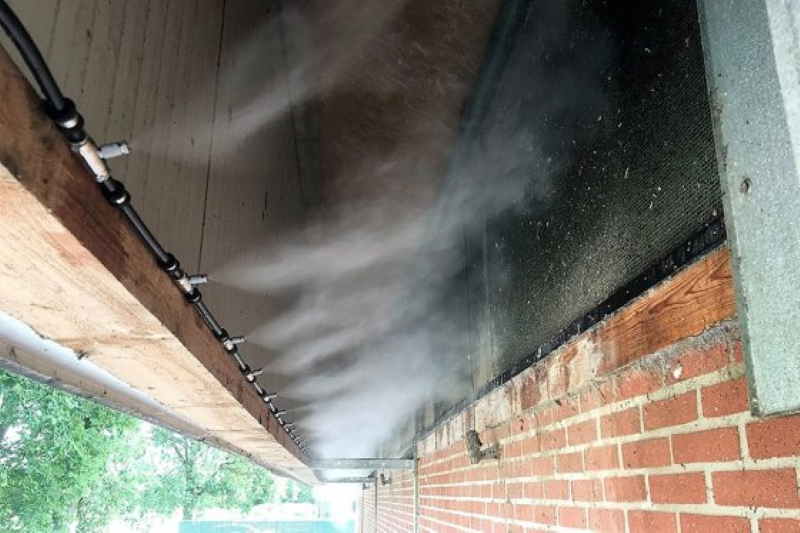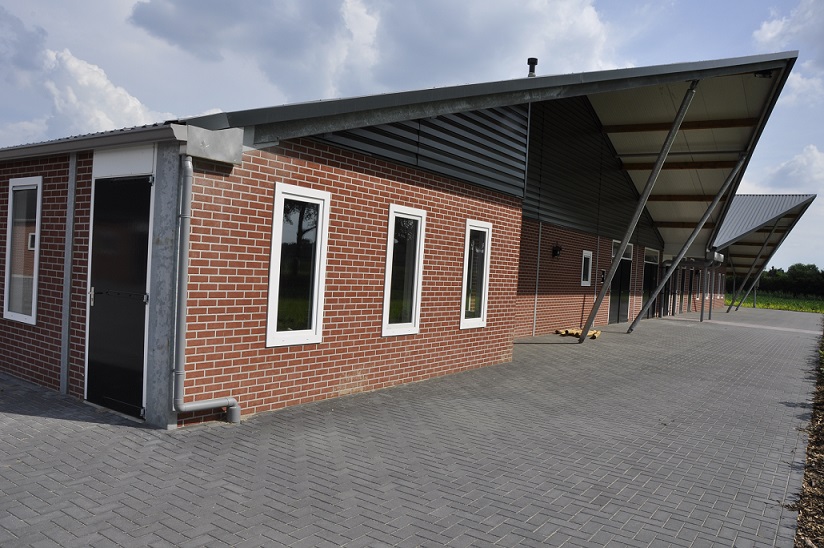- Home
- EU PiG – High-pressure fogging
EU PiG – High-pressure fogging
Pigs have an optimum temperature at which they thrive. Temperatures across Europe in the summer (even Ireland and the UK) can exceed that level, causing stress on pigs and lowering productivity.
Ambassador: John van Paassen, Netherlands
Publication date: July 2020
Theme: Animal welfare
Challenges: Solutions for heat stress
In extreme cases, it can cause increases in mortality despite ventilation and systems to keep the air moving in indoor accommodation.
To reduce the climate risks in the pig accommodation and achieve an optimal climate for the pigs, Dutch farmer John van Paassen uses a system that produces high-pressure fog to lower the temperature during the hot summer months.
High-pressure fog system results
Benefits
- Ability to lower building temperature by up to 6 °C
- Lower pig mortality
During high-temperature periods, cooling allows animals to keep their feed and stay fitter. As a result, they give about 0.8 more piglets in the next litter. Furthermore, the growth of finishers is about 50 g higher and feed conversion 0.1 lower if they have less heat stress.
If this innovation had not been present, approximately 2–5% of sows and finishers would have died during the hottest months.
Costs
Installation costs:
- €12 per sow
- €2 per porker
Typical 500 sow unit – €6,000.
Plus, finishing (7,000 pigs) – €14,000.
Each fogging pump uses 800–900 kW a year. For the whole farm, the energy costs increase by around €300.
The investment, including the installation of the system, was €18,000. The life cycle of the system is expected to be 10 years.
Maintenance requires pumping the water out of the system before winter and control and boiling of the sprinklers once a year. In total, one day of additional work per year is needed (€300).
High-pressure fog system in practice
To reduce the climate risks in the pig accommodation and achieve an optimal climate for the pigs, a system that produces high-pressure fog is used to lower the temperature during the hot summer months.
This is so heat stress can be prevented, reducing productivity losses and mortality. The system is relatively cheap to install and uses a series of nozzles along the side inlets/vents (externally mounted) to release a fine mist. The mist is drawn into the building with air by the building's ventilation system. Moist air moves through the building and exits at the ridge fans. Triggered by exceeding a specific temperature, the water can be 25 times more effective at cooling than air. Ventilation of the fog removes heat from the animals and the buildings in conjunction with the ventilation system.
Case study translations
Technical reports
 EU PiG
EU PiG
Building sprinkler system
 EU PiG
EU PiG
Externally mounted vents on the side of the building
Animal welfare best practice challenges
Strategies for dealing with piglets from hyperprolific sows
Strategies to reduce aggression between animals
The quality of the farm atmosphere
Contact us
To access more information, contact RPIG (Netherlands): Jos Peerlings or EUPig@ahdb.org.uk
This project has received funding from the European Union`s Horizon 2020 research and innovation programme under grant agreement No 727933.
 Government logo
Government logo

